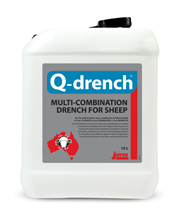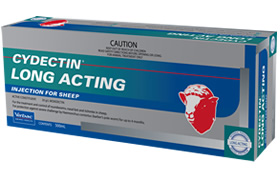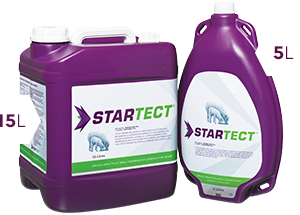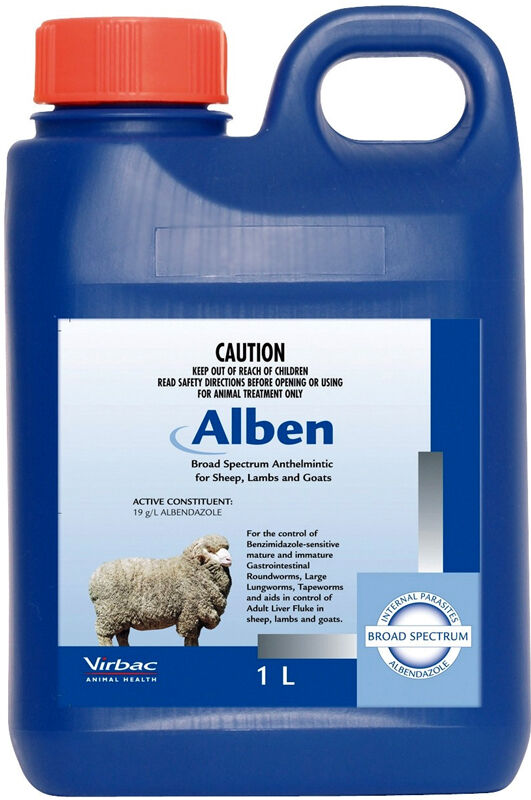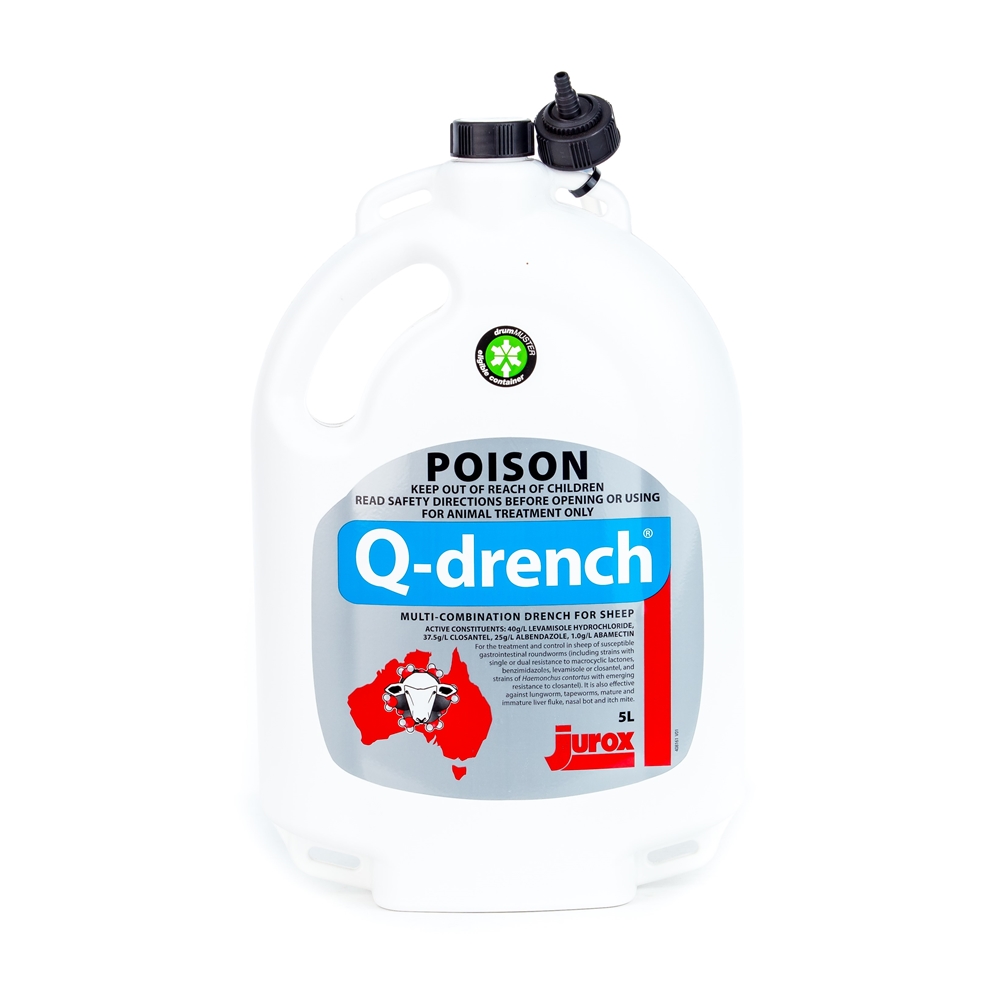Description
Q-DRENCH
ACTIVE CONSTITUENTS
Abamectin 1.0 g/L
Albendazole 25.0 g/L
Closantel 37.5 g/L
Levamisole hydrochloride 40.0 g/L
ACTIONS
Contains abamectin, albendazole, closantel and levamisole, which are members of the macrocyclic lactone, benzimidazole, salicylanilide and imidazothiazole groups respectively. Broad spectrum oral anthelmintic which is effective against susceptible gastrointestinal roundworms (including strains with single or dual resistance to macrocyclic lactones, benzimidazoles, levamisole or closantel, and strains of Haemonchus contortus with emerging resistance to closantel). It is also effective against lungworm, tapeworms, mature and late immature liver fluke, nasal bot and itch mite. Q-drench can also be used to prevent the introduction of resistant strains onto a property and in a strategic worming program on sheep properties.
Resistance may develop to any chemical. Ask a local veterinary practitioner or animal health advisor for recommended parasite management practices for your area to reduce development of resistance. It is advisable that a resistance test be conducted before any parasite treatment is used.
INDICATIONS
Treatment and control in sheep of sensitive strains of the following parasites of sheep. Adult and immature gastrointestinal roundworms: barber’s pole worm (Haemonchus contortus) including inhibited L4 stage and strains with single, dual or triple resistance to macrocyclic lactones, benzimidazoles, levamisole or closantel, and strains with emerging resistance to closantel; small brown stomach worm (Teladorsagia (Ostertagia) circumcincta) including inhibited L4 stage and strains with single or dual resistance to macrocyclic lactones, benzimidazoles or levamisole; black scour worm (Trichostrongylus colubriformis) including strains with single or dual resistance to macrocyclic lactones, benzimidazoles or levamisole; large stomach worm (H. placei); stomach hair worm (T. axei); black scour worm (T. vitrinus); small intestinal worm (Cooperia sp.); thin necked intestinal worm (Nematodirus sp.); large mouthed bowel worm (Chabertia ovina); nodule worm (Oesophagostomum columbianum); large bowel worm (Oe. venulosum); whipworm (Trichuris ovis); intestinal threadworm (Strongyloides papillosus); and hookworm (Bunostomum sp.).
Also effective against nasal bot (Oestrus ovis); large lungworm (Dictyocaulus viviparus); liver fluke (Fasciola hepatica), mature fluke and immature forms including 6 week old stages, and reduces the output of viable fluke eggs; tapeworms (Monezia sp.) heads and segments; and itch mite (Psorergates ovis).
CONTRAINDICATIONS
Administration to lambs under 6 weeks of age or 10 kg bodyweight.
PRECAUTIONS
Exercise care in handling weak, pregnant and young animals to avoid unnecessary stress. Avoid yarding animals off-feed overnight, and ensure animals have access to water when yarded prior to drenching. Recommended dose should not be exceeded, except under veterinary supervision.
WITHHOLDING PERIODS
Meat 28 days. Milk Do not use in female sheep which are producing, or may in the future produce, milk or milk products for human consumption.
DOSAGE AND ADMINISTRATION
For use as a quarantine drench, treat all animals on arrival, or ideally at farm of origin, and hold in yards for at least 24 hours before release. For use in a strategic worm control program, speak to an animal health advisor or veterinarian. Administer orally. Check accuracy of the drench equipment before and during use. A representative sample of animals should be weighed before treatment. Dose the mob to the heaviest animal by liveweight in each group (ewes, wethers, rams, lambs). Do not underdose. Where there is a large variation in size within the group, dose rate should be based on the label directions for each weight range. Drafting into two or more lines may be appropriate to avoid excessive overdosing.
Dose. 1 mL/5 kg bodyweight. Shake well before use. See dose rate table on product label for further information.

